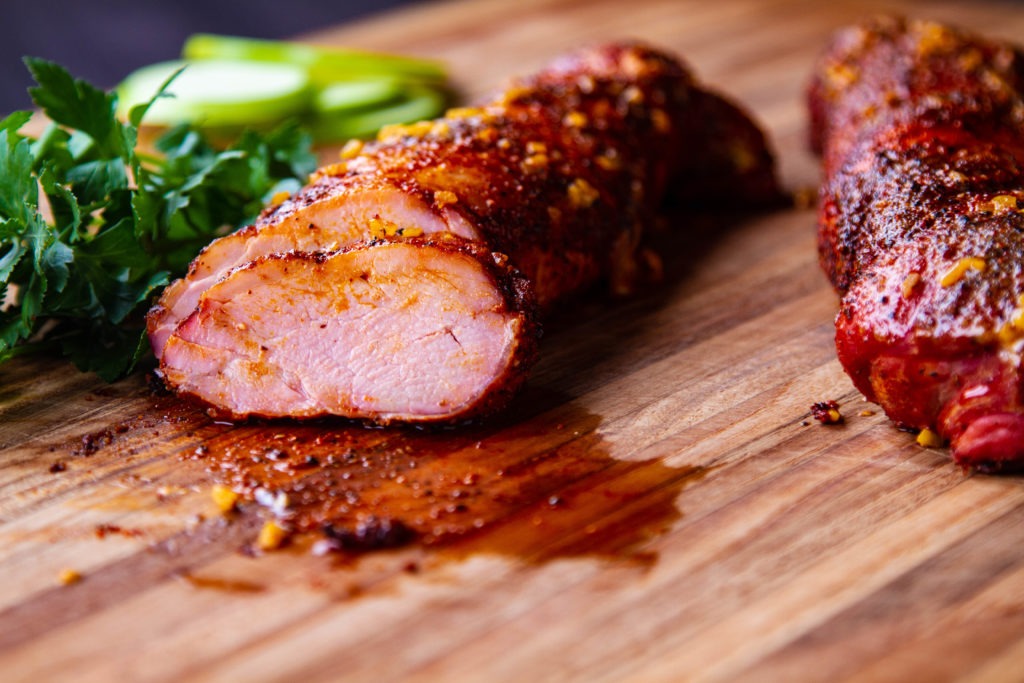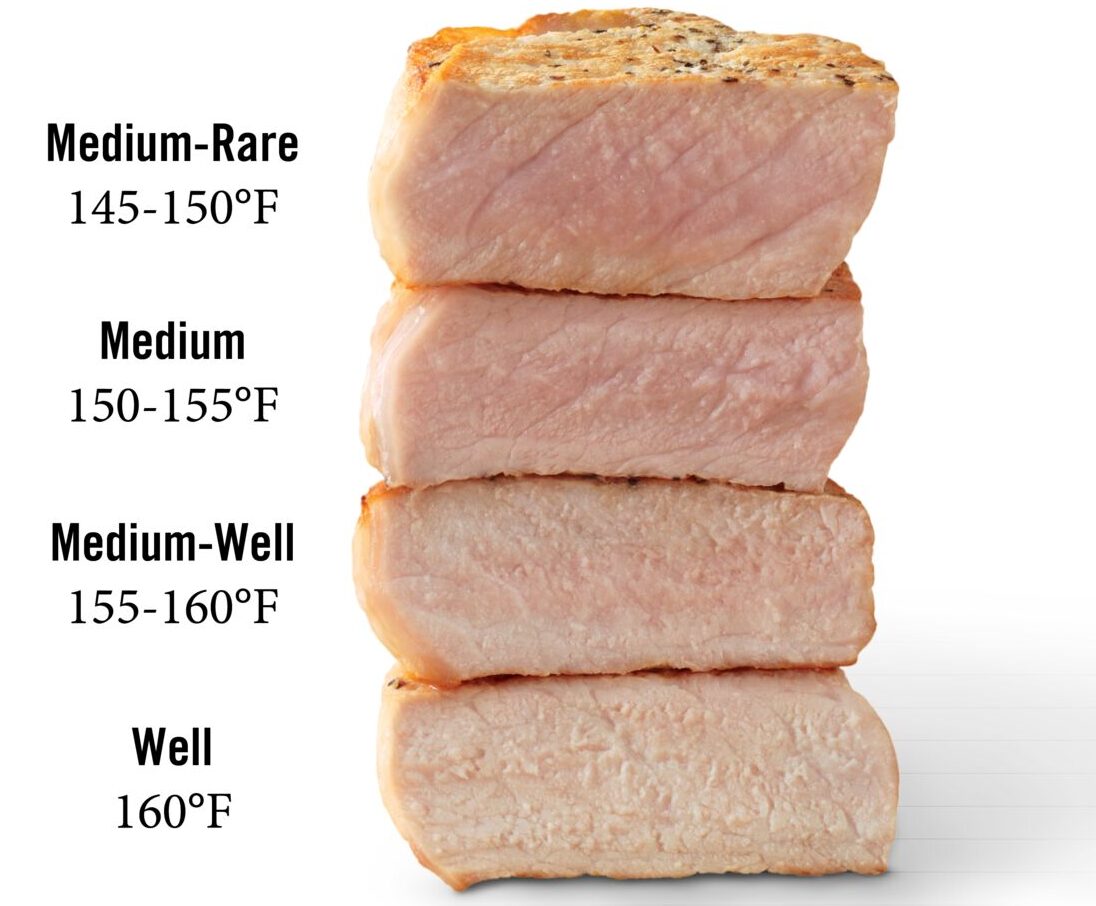Pork muscle refers to the various muscles found on a pig that are used for movement and support. These muscles include popular cuts like pork shoulder, pork butt, pork tenderloin, pork chops, and more. Learning how to properly cook pork muscle results in tender, juicy meat with amazing flavor.
Cooking pork muscle can seem daunting to home cooks due to fears of undercooking. However, with the right techniques and recipes, you can cook pork muscle to perfection every time. In this complete guide, we’ll cover choosing the right cut, proper seasoning and marinades, recommended cooking methods, doneness tips, and more. Let’s get cooking!
Selecting the Best Cuts for Your Recipe
Choosing the right pork muscle cut is key Tenderloin is ideal for fast cooking like grilling or sautéing Loin roasts are great for slower roasting. Pork butt and shoulder contain lots of collagen so are perfect for braising, stewing, or pulled pork.
Opt for 1-2 inch thick chops or steaks for pan searing or grilling. Go thicker for roasts and boneless ribs intended for longer cooking times. Know that enhanced pork (injected with broth) cooks faster than natural pork.
Proper Seasoning and Marinades
Seasoning is vital for flavorful pork muscle. A simple dry rub of salt, pepper, paprika, garlic powder, onion powder, and cumin works wonderfully. Get creative with spice blends featuring chili powder, cinnamon, coriander, and more.
Marinades infuse even more flavor. A soy sauce, brown sugar, and ginger marinade gives pork an Asian twist. For Mexican flavors, use lime juice, cilantro, and chili powder. Olive oil, lemon, and herbs marinates pork with a fresh Mediterranean taste.
Recommended Cooking Methods
Grilling – Best for 1-inch or thinner quick cooking cuts like chops and cubed meat Use medium heat
Pan searing – Ideal for 1-inch chops steaks or tenderloin medallions. Use high heat to develop a nice crust.
Baking – Roasts, thicker cuts, and bone-in ribs bake wonderfully at 325-375°F to tender perfection.
Broiling – Chops, steaks, and tenderloins broil quickly under high, direct heat. Watch closely to avoid burning.
Braising – Shoulder, butt, and country ribs become fall-off-the-bone tender when braised low and slow in flavorful liquid.
Smoking – Imparts incredible flavor during low, indirect cooking. Use wood chips, chunks, or pellets for smoke. Great for larger cuts.
Sous vide – Cooks pork evenly edge-to-edge. Vacuum seal pork with seasoning and cook in a precise water bath.
Is It Done? Doneness Tips
-
Use a meat thermometer for accuracy. Insert into the thickest part away from bone.
-
The safe minimum internal temperature is 145°F. For tender juiciness, target 140-145°F.
-
Let pork rest 5-10 minutes before cutting to allow juices to redistribute.
-
If concerned about safety, cook to 160°F. This results in very well done, drier pork.
-
For whole legs/shoulders, cook to 195°F for pulled pork consistency.
Cooking Times and Temperatures
-
Chops, steaks – Cook to 140-145°F, about 5-8 minutes per side for 1-inch cuts.
-
Tenderloins – Roast at 400°F to 140-145°F, 15-25 minutes for 1 pound.
-
Boneless roasts – Roast at 325°F to 140-145°F, 15-20 minutes per pound.
-
Bone-in roasts – Roast at 325°F to 140-145°F, 20-25 minutes per pound.
-
Shoulder, butt – Braise/smoke at 225-250°F to 195-205°F, 1-2 hours per pound.
Serving Suggestions
Juicy pork muscle deserves accompaniments like:
- Herb roasted potatoes
- Garlicky green beans
- Sweet potato fries
- Quinoa salad
- Skillet corn
- Twice baked potatoes
- Roasted broccoli
Make It a Meal
Round out a pork muscle entrée into a full meal by adding:
- A green salad with vinaigrette dressing
- Fresh baked rolls or cornbread
- A vegetable medley sauté
- A pilaf, risotto, or seasoned rice
- Macaroni and cheese
- Mashed, baked, or fried potatoes
Tips for Leftovers
-
Let pork cool completely before refrigerating in a sealed container. Use within 3-4 days.
-
Slice and add to soups, stews, pasta dishes, or tacos.
-
Dice or shred and use in casseroles, sandwiches, omelets or breakfast hash.
-
Portion into freezer bags or containers. Freeze for 2-3 months. Thaw in fridge overnight before use.
With the right cut, seasoning, cooking method, doneness, and recipe, you can master cooking tender and delicious pork muscle.

The safe internal pork cooking temperature is 145° F followed by a 3-minute rest.

Cooking Temperature of Pork
Finding the right temperature to cook pork is the last step in serving a juicy, tender piece of meat. Pork today is very lean, making it important to not overcook and follow the recommended pork cooking temperature. The safe internal pork cooking temperature for fresh cuts is 145° F. To check doneness properly, use a digital cooking thermometer.
Meats that have just been cut, like pork chops, pork roasts, pork loin, and tenderloin, should be 145° F to get the most flavor. Ground pork should always be cooked to 160° F. “Tender” means that some pork cuts are done, like small cuts that are hard to test with a thermometer or large cuts that cook slowly at low temperatures. “Fresh ham should be cooked to 145° F and then rested for 3 minutes. Fully cooked ham can be warmed up to 140° F or even eaten cold.”
If you follow these pork cooking temperature guidelines, you will not only be safe to eat, but your meat will also stay in good shape, giving you a juicy, tender, delicious meal.
The Perfect Money Muscle – BBQ Pulled Pork
FAQ
What is pork muscle used for?
How long to cook money muscle?
How do you cook money muscle after removing it from pork?
Once you have removed it from the shoulder, trim away any remaining excess fat on the surface of the meat. This will help expose more of it to heat as it smokes, allowing it to render better. The best way to cook money muscle after you’ve removed it from the pork butt is to smoke it low and slow.
Can one eat pork?
A cooked, medium pork cutlet or steak provides 239 calories, 34 grams protein, 10 grams fat, 4 grams saturated fat, 697 milligrams sodium, and 0 grams carbohydrate, if you eat only the lean part of the steak. Pork contains many of the micronutrients (vitamins and minerals) found in beef and it is high in protein, but can be lower in fat than beef—depending on cut and preparation. Meat from any kind of mammal, including pork, can cause an allergic reaction (and some people who are allergic to mammalian meat also react to poultry).
Is pork a good back muscle?
Pork is a versatile, economical meat that can be used in a huge variety of ways – from ham, bacon and sausages to pulled pork, chops and BBQ ribs, to name but a few. Understanding which cuts suit which cooking methods will help you make an informed decision about what to buy. This back muscle does little work and is very low in connective tissue.
What is pork money muscle?
The pork ‘money muscle’ is tender and beautifully marbled with fat, that will give you melt-in-your-mouth flavor unlike anything else. Here’s everything you need to know about one of the best parts of the pork butt or shoulder.
